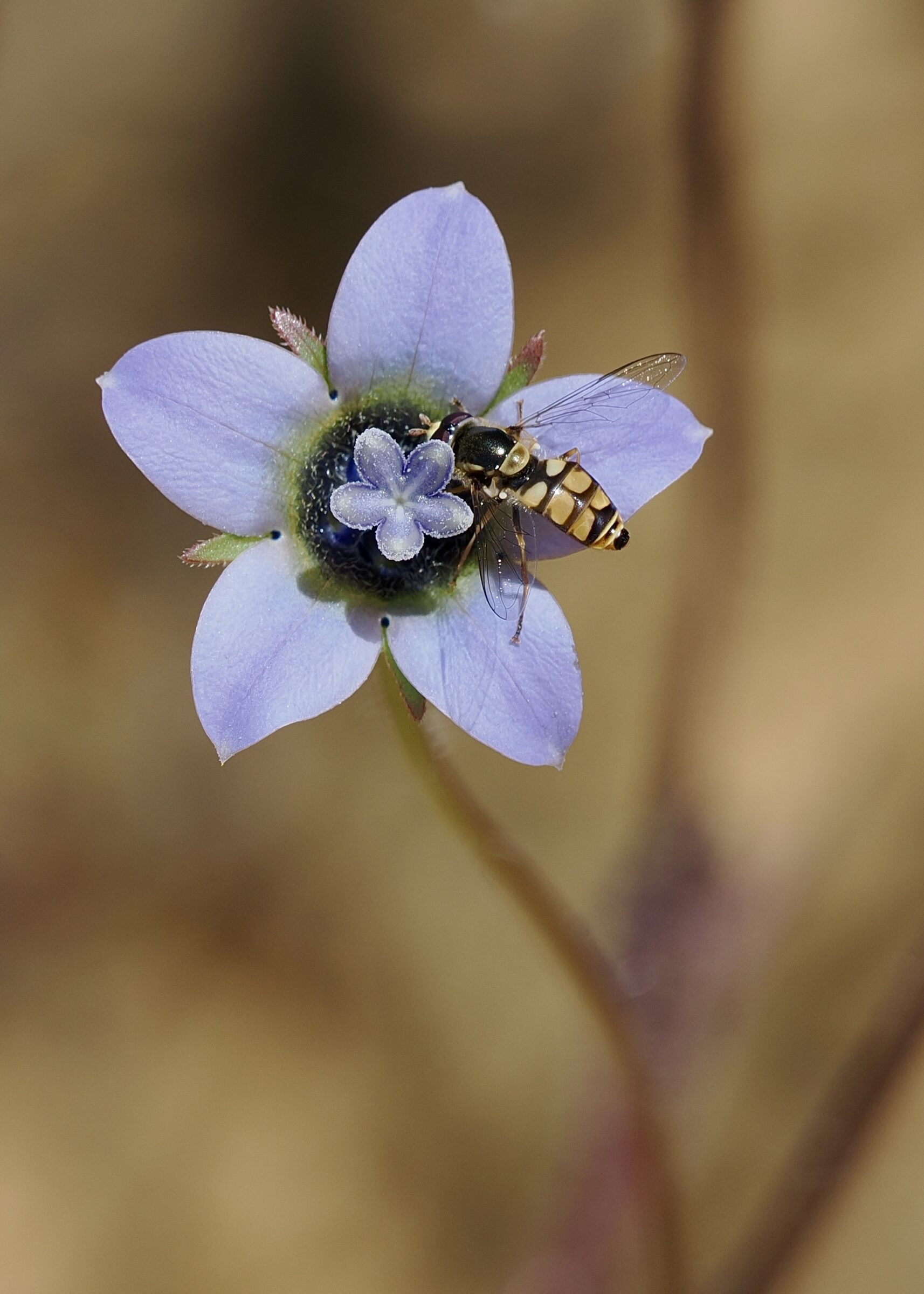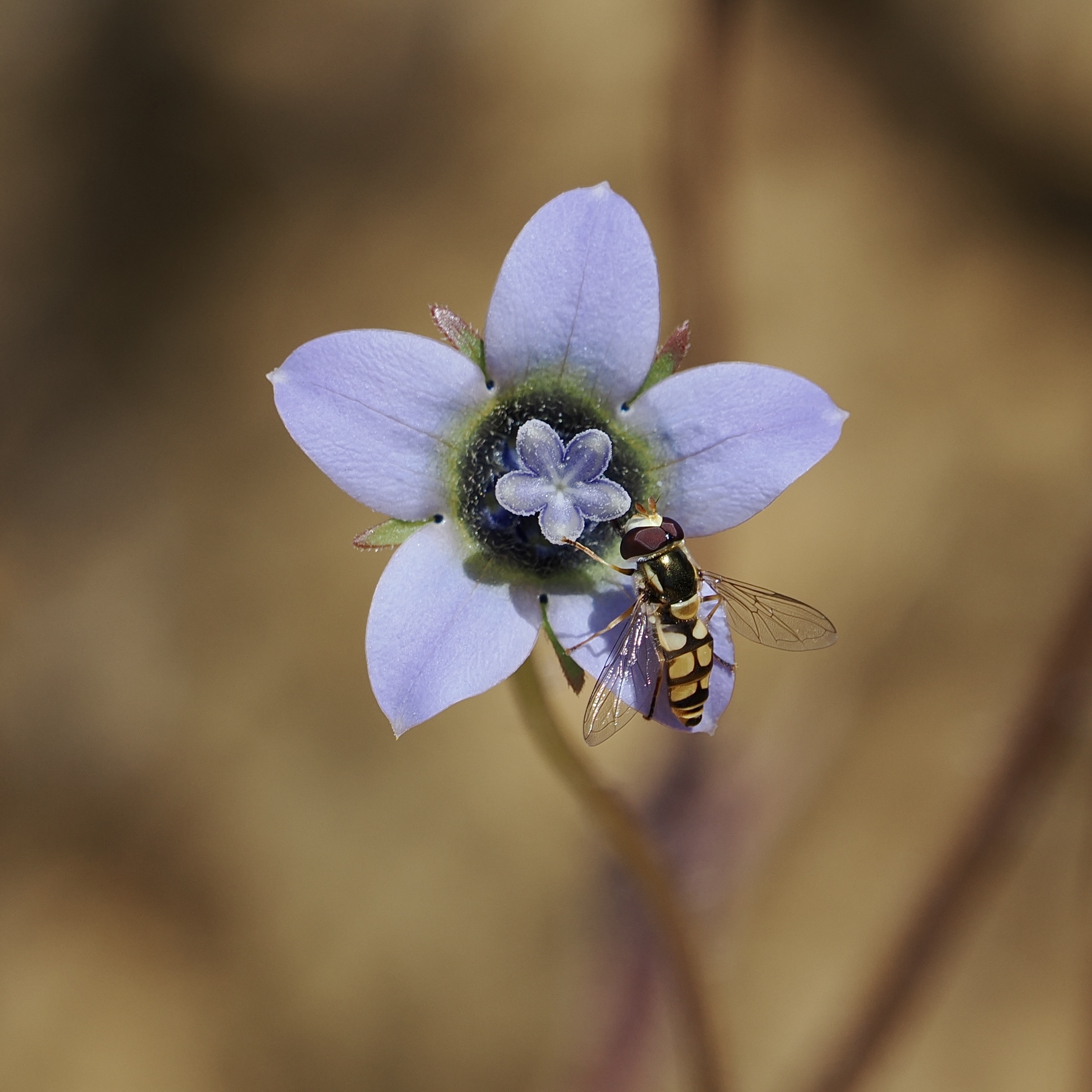…and – certain prejudices and misinformation notwithstanding – neither is a noxious pest in southwestern Western Australia.
The South African is a flowering plant.
The FIFO is a fly.
Flies deserve rather more credit for their beneficial activities than most human Australians realise.
Not every South African plant “runs riot” and/or becomes a “noxious weed” when/if it “succeeds” on Australian soil.
Wahlenbergia capensis – the Cape bluebell – is native to Africa’s southwestern “corner” -the western part of South Africa’s Cape Province.
It has become abundant in another continent’s southwestern corner; Cape bluebells were first recorded in southwest WA in 1898.
Australia and South Africa have provided each other with a plethora of “invasive” plants – introduced (sometimes intentionally, sometimes accidentally) species that have “succeeded” much too well.
Understandably, some South African sources assume that Cape bluebells are “noxious weeds” in Western Australia.
To my knowledge, Wahlenbergia capensis has not become a pest plant in WA; certainly, it has not “gone berserk here”.
Whenever I come across Cape bluebells, they are a small presence – one or two individuals among many more members of various other species.
I suspect that most southwest West Australian humans wrongly regard the Cape bluebell as yet another of their own region’s beautiful endemics.
I have many times seen one “true blue Aussie” enjoy a mutually beneficial encounter with a Cape bluebell.
Simosyrphus grandicornis is one of two species commonly known in Australia as the “common hover fly” or “common hoverfly”.
As adults, hover flies feed on nectar and pollen; as larvae, they are voracious predators, devouring aphids and other “pests”.
From an agricultural perspective, hover flies are “good news”, as both pollinators and pest controllers.
Both photos show the same individuals.

Our recent day trip to the Wongan Hills region will yield at least two more posts; the area lived up to its reputation for Spring wildflowers, and also provided a very nice surprise, bird-wise.
